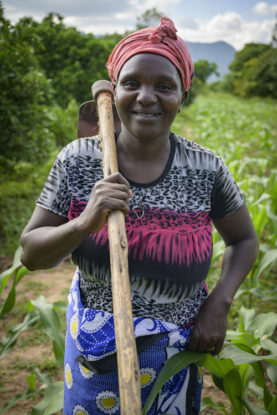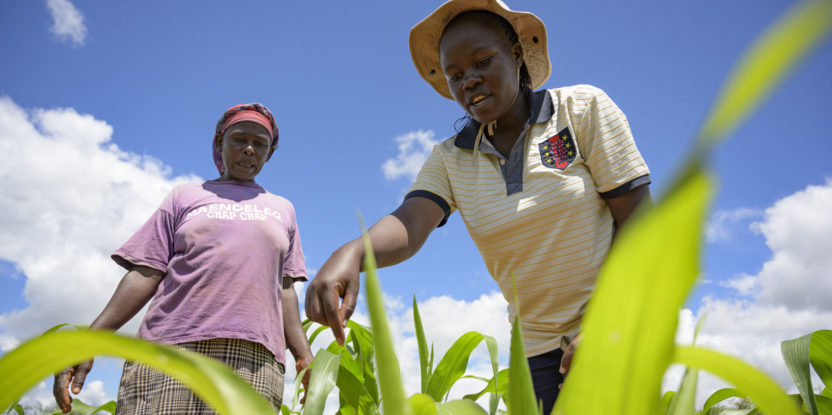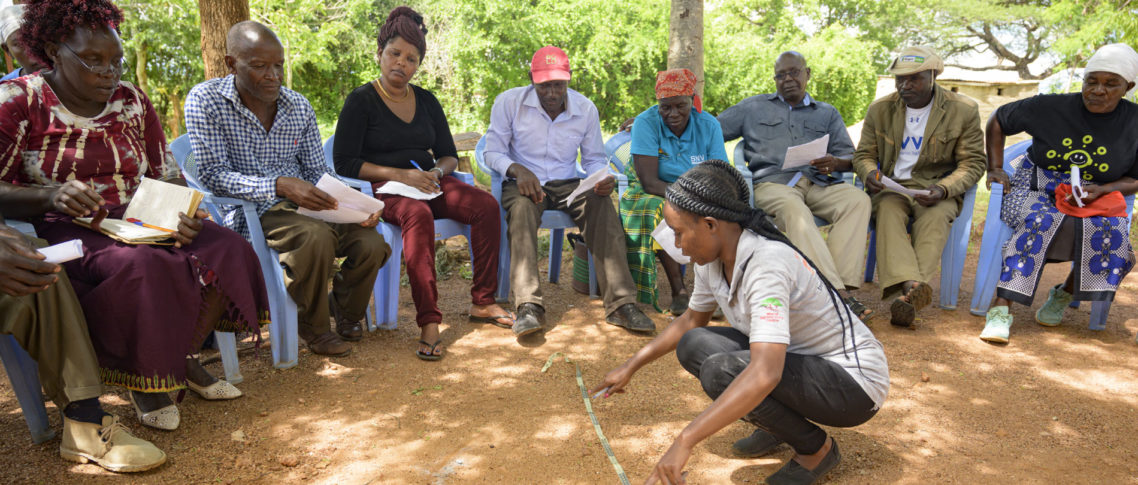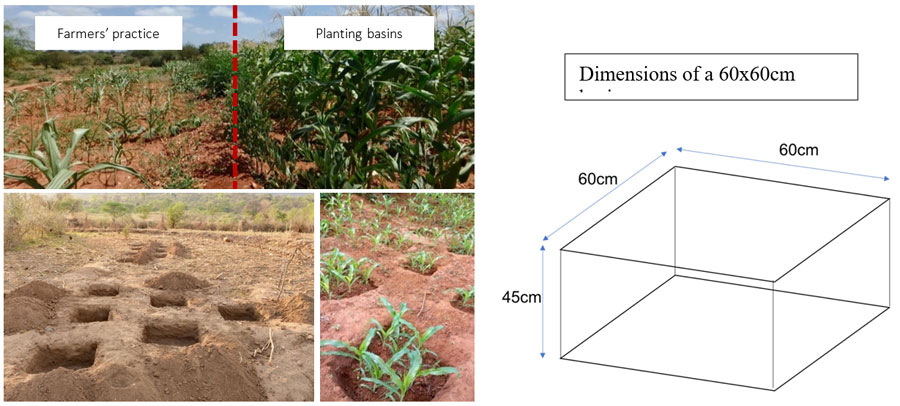The region is plagued with erratic and unpredictable rainfall, low soil fertility, and is under pressure from a growing population, she said. Planting basins allow farmers to prepare the land during the dry season before the rains – on which their crops are totally reliant for water – begin. With traditional plowing methods, the planting preparations begin later.
“Farmers do not have to wait for the use of a plow, can plant earlier, and spread their labor over an extended period of time,” Winowiecki added.
Although basin preparation takes more time than traditional plowing methods, overall, crop planting conditions and maize crop yields improved, leading farmers to say the extra time investment is worthwhile.
Men got more involved in management of the trees, which included such fruit trees as mango and papaya, timber species such as melia (Melia volkensii), and multi-purpose species such as moringa (Moringa oleifera) and neem (Azadirachta indica). Their interest was most likely related to their ability to sell the fruit. Although the project provided farmers with seedlings, buying trees typically requires cash, a resource that men are more likely to control.

The project increased tree survival on farmer’s fields from 30 percent in 2016 to over 80 percent in 2019, Winowiecki said, adding that tree-planting can help increase the ability of soil to absorb water and reduce erosion. The challenge to increased tree cover in arid climates was low seedling survival, however this project has overcome these challenges.”
GENDER DIVIDE
The technique altered traditions. Men reported they had less time for leisure and community activities, and women said they had less time for housework, water and fuel wood gathering. Women also said they spent more time on land preparation than they had previously, but they spent less time weeding.
The higher yields benefited women, many of whom have now formed collective farming groups to dig basins in groups, reporting increased morale and motivation and continued sharing of lessons learned and innovations on their farms.

Victoria Kioko, a farmer in Kitulie village, Mwala, Machakos County. Photo credit: Kelvin Trautman
“While men are expected to look for off-farm income, women are often responsible for growing food for the family to eat, so the boost in yields ultimately benefits women, reducing their workload overall,” said Mary Crossland, a Ph.D. student at Britain’s Bangor University in Wales.
In this part of Kenya, farmers produce maize to sell and for household consumption. A major benefit of basins is that when the rains are poor they produce a maize yield, while their traditional farming practices fail completely.
“As farmers have gained confidence in the basins, they have started to experiment with growing fruit and vegetables within them, indicating that the technology could be used with higher-value crops, not just those used for subsistence, and help increase incomes,” Crossland said.
“We’ve seen that the number of basins the average farmer has on their farm has increased from an average of 35 basins in 2018 to over 80 basins in 2020, although several farmers have dug hundreds and even thousands of basins,” she said, adding that the scientists observed yield increases of two to six times the usual amount.
For restoration projects, the scientists learned that the best approach is to offer multi-faceted options, which can suit both men and women.
This research was conducted as part of Mary Crossland’s Ph.D. Dissertation at Bangor University within the Restoration of Degraded Land for Food Security and Poverty Reduction in East Africa and the Sahel: Taking Successes in Land Restoration to Scale project supported by International Fund for Agricultural Development, European Union and the CGIAR Research Program on Forests, Trees and Agroforestry.
Copyright policy:We want you to share Forests News content, which is licensed under Creative Commons
Attribution-NonCommercial-ShareAlike 4.0 International (CC BY-NC-SA 4.0). This means you are free to redistribute our material for non-commercial purposes. All we ask is that you give Forests News appropriate credit and link to the original Forests News content, indicate if changes were made, and distribute your contributions under the same Creative Commons license. You must notify Forests News if you repost, reprint or reuse our materials by contacting
forestsnews@cifor-icraf.org.





